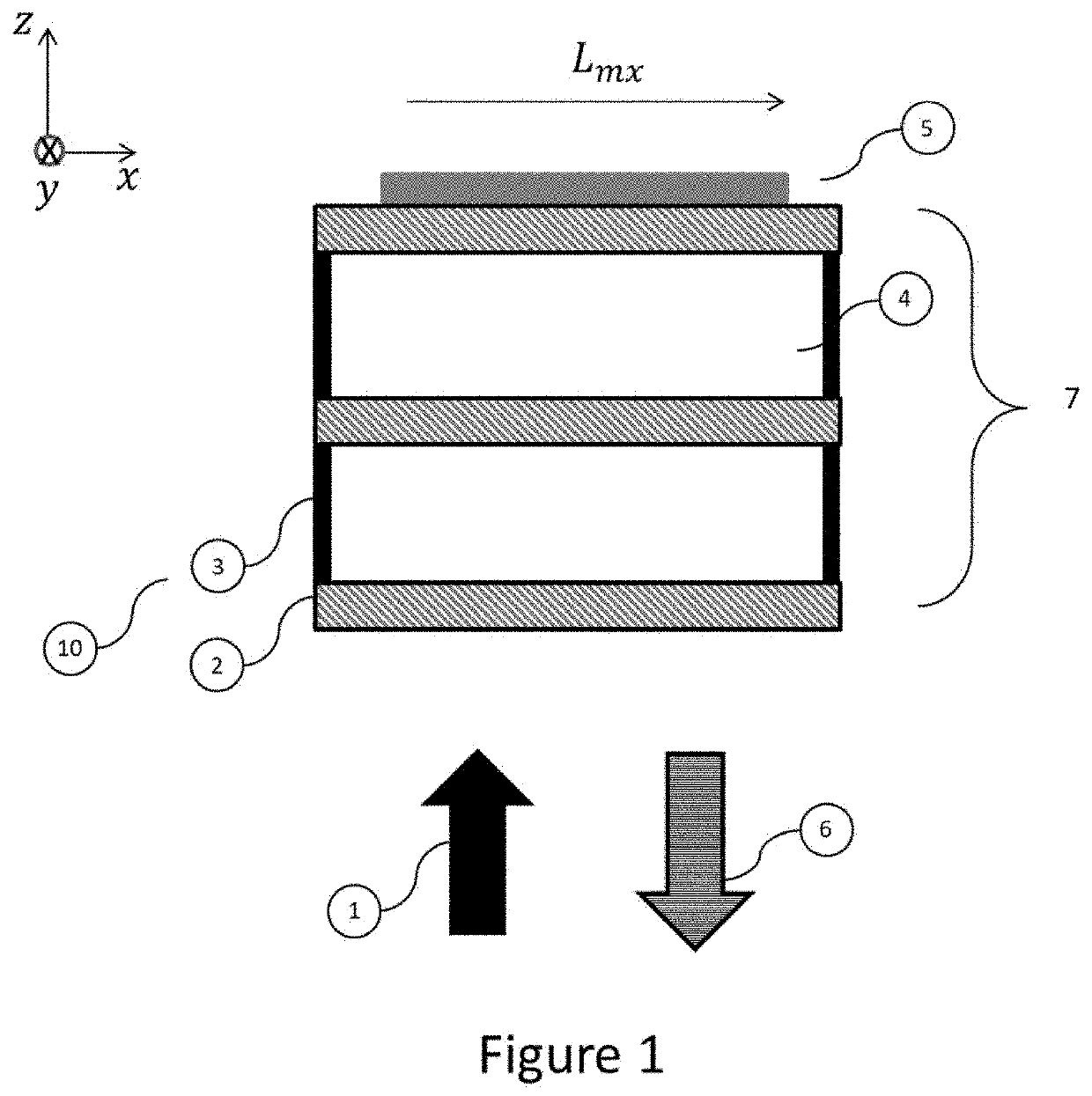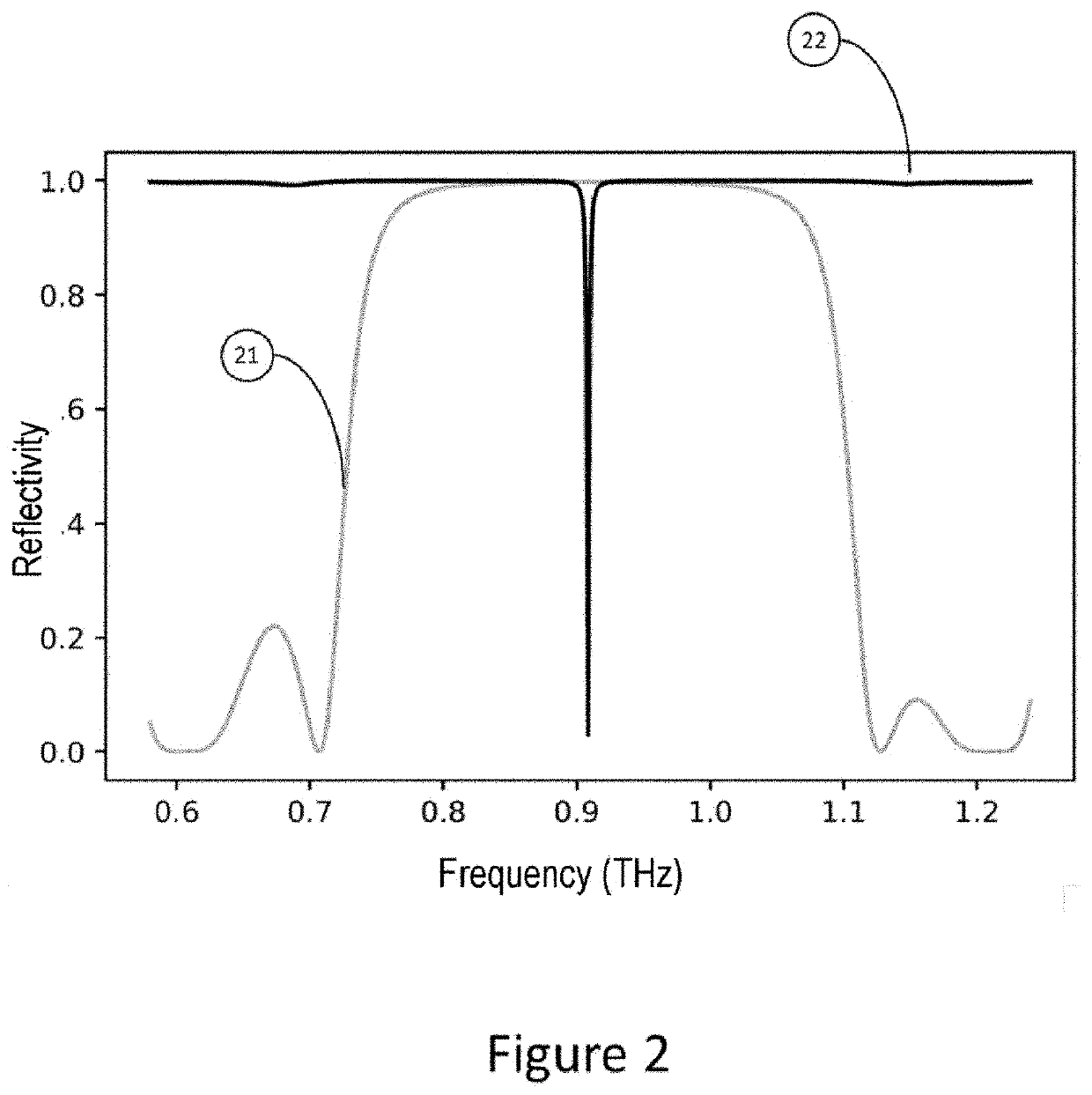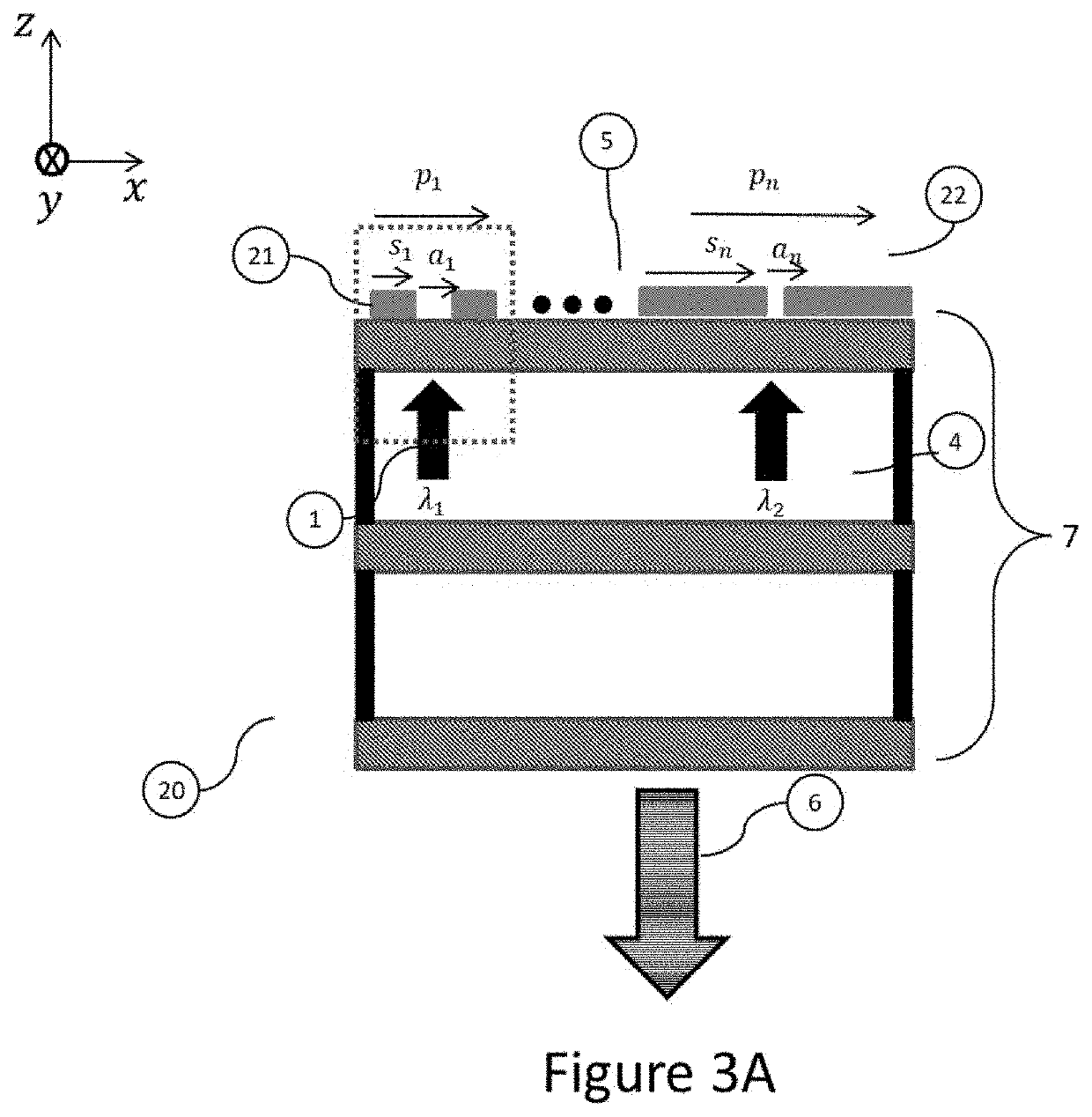Electromagnetic cavity able to support tamm modes
a technology of electromagnetic cavity and electromagnetic cavity, which is applied in the field of electromagnetic cavity of tamm, can solve the problems of unfavorable diffraction limit, low quality factor, and substantial drawback of thz component production
- Summary
- Abstract
- Description
- Claims
- Application Information
AI Technical Summary
Benefits of technology
Problems solved by technology
Method used
Image
Examples
first embodiment
[0045]The invention is based on a Tamm resonator suitable for the THz spectral range. FIG. 1 shows a schematic profile view of a Tamm electromagnetic THz cavity 10 according to the invention. In this embodiment, the cavity is formed from a periodic stack 7 and from a metal layer 5. The periodic stack 7 comprises an alternation, in a z-direction, of dielectric or semiconductor layers of high and low refractive index forming an interference mirror or DBR (distributed Bragg reflector), and having an upper layer of high refractive index. By low and high refractive index, what is meant is that the refractive index that is said to be high is higher than the refractive index that is said to be low. The stack reflects a certain wavelength range (called the band gap) in the spectral range of the incident THz radiation 1 propagating in the z-direction. The thickness of each of the layers is equal to about an uneven multiple of λ / 4n (n refractive index in the layer), A being the central wavele...
second embodiment
[0055]FIG. 3A illustrates a schematic profile view of a Tamm electromagnetic THz cavity 20 according to the invention. In this embodiment, the DBR is identical to that of the cavity 10 but the upper metal layer 5 is discontinuous. It is structured so as to form a grating of metal strips of width s and separated by a distance a and of fill factor ff=s / p with p=s+a. It is known that the resonant frequency of the cavity 20 and the quality factor of the cavity 20 decrease as the fill factor decreases.
[0056]FIG. 4A and FIG. 4B show the variation in the resonant frequency and in the quality factor as a function of the fill factor of the Tamm cavity 20, respectively, in the case where the upper metal layer is structured so that the fill factor is constant in the x-direction. Here, the periodicity p of the Tamm cavity is set and equal to 75 μm, whereas the width s of the metal strips varies with ff. It may be seen that resonant frequency and quality factor increase with fill factor. It is t...
third embodiment
[0067]In order to obtain a THz cavity the resonant frequency of which is tunable, while maintaining a high quality factor, the cavity 30 of the invention, which is schematically shown in profile in FIG. 5, comprises a mirror 31. This mirror 31 is composed of a lower metal layer 32 and a carrier layer 33. In the embodiment of FIG. 5, the assembly 20 formed by the DBR 7 and the upper metal layer 5 is identical to that of FIG. 3A and the lower metal layer 32 of the mirror 31 is made of gold and the upper carrier layer 33 of the mirror 31 is made of silicon. The mirror 31 is placed above the upper metal layer 5 at a distance D=λm / 4 from the latter in order to maximize the strength of the electric field in the upper metal layer and in the region below the upper dielectric layer of the stack 7. The mirror is separated from the layer by a dielectric layer 34. In the example of FIG. 5, this layer is a layer of air. Here, λm corresponds to the longest resonant length of the cavity 30, i.e. t...
PUM
| Property | Measurement | Unit |
|---|---|---|
| size | aaaaa | aaaaa |
| size | aaaaa | aaaaa |
| size | aaaaa | aaaaa |
Abstract
Description
Claims
Application Information
 Login to View More
Login to View More - R&D
- Intellectual Property
- Life Sciences
- Materials
- Tech Scout
- Unparalleled Data Quality
- Higher Quality Content
- 60% Fewer Hallucinations
Browse by: Latest US Patents, China's latest patents, Technical Efficacy Thesaurus, Application Domain, Technology Topic, Popular Technical Reports.
© 2025 PatSnap. All rights reserved.Legal|Privacy policy|Modern Slavery Act Transparency Statement|Sitemap|About US| Contact US: help@patsnap.com



